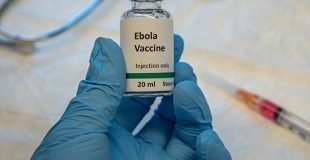
In Uganda, about 7,200 maternal deaths occur every year, and for every maternal death, 6 – 15 mothers survive with chronic and debilitating ill health such as obstetric fistula.
Kampala, Uganda | THE INDEPENDENT | Countries around the World will on Friday, May 23rd carry out a campaign to highlight the gravity and the need to end obstetric fistula. Obstetric fistula, that is preventable, is a serious and tragic childbirth injury.
Obstetric fistula is a hole between the birth canal and bladder or rectum or both, caused by prolonged, obstructed labour without access to timely, quality medical treatment. It often leads to chronic health problems, depression, social isolation, and deepening poverty. Ninety per cent of fistula cases result in stillbirths.
While pregnancy is safer than ever on average, health systems and communities are still falling short on the promise of safe childbirth, with tens of thousands of women and girls sustaining injuries such as obstetric fistula around the world each year.
The theme of the International Day to End Obstetric Fistula is: “Breaking the Cycle: Preventing Fistula Worldwide.”
According to experts, the prevalence of fistula across lower- and middle-income countries in the Arab States region, Asia, Latin America and the Caribbean, and sub-Saharan Africa is a symptom of deep-rooted global inequalities. The injury is almost absent from high-income countries.
According to the UNFPA Uganda country office, obstetric fistula is a childbirth injury that has been extremely neglected, despite the devastating impact it has on the lives of affected women and girls. During the prolonged labour, the sustained pressure of the baby’s head on the mother’s pelvic bone damages the mother’s soft tissues, creating a hole – or fistula – between the vagina and the bladder and/or rectum. This results in leaking of urine and/or faeces through the vagina.
The women and girls suffering from obstetric fistula are a living proof of high maternal morbidity. In Uganda, about 7,200 maternal deaths occur every year, and for every maternal death, 6 – 15 mothers survive with chronic and debilitating ill health such as obstetric fistula.
The prevalence of fistula (obstetrics and GBV related) in Uganda is 2 per cent2, with 1,900 new cases happening annually, and a backlog of 200,000 cases. Women represent the face of fistula and girls, who live in rural areas (2 per cent), are not educated (1.8 per cent), and are within the lowest wealth quintile (4.8 per cent)
In Uganda, one in every four girls between the ages of 15 and 19 is pregnant or has had a child already. Yet, studies have shown that a girl of this age group – 15 and 19 – is twice as likely to die or get complications during childbirth compared to a woman in her 20’s. If she is under 15, the risks are 5 times higher.
About 80 per cent of the estimated cases of Ugandan women suffering from obstetric fistula are teenage girls who gave birth before the age of 19.
The consequences of fistula are life-shattering: The baby usually dies, and the woman is left with chronic incontinence.
As a result, she is often abandoned by her husband and family and ostracized by her community. Without treatment, her prospects for work and family life are greatly diminished. Fistula can lead to chronic medical problems, as well as devastating emotional and mental suffering.
Women and girls at risk of fistula are also at risk of maternal mortality, making action to end the injury a matter of life and death. Investing to ensure equitable access to quality maternal health services can stop fistula – and can save the lives of women and girls.
Experts say efforts must go beyond timely medical interventions; they must combat the social, economic and cultural factors that heighten women’s vulnerability to poor maternal health outcomes, including gender inequality.
“Health systems can reduce rates of fistula by tracking prevalence, correcting for gaps in care, and safeguarding universal access to a competent workforce of health providers such as midwives – who can provide nearly all essential maternal health services,”an expert said.
“Community engagement and education can address the sociocultural drivers of fistula, facilitate the social reintegration of survivors, and improve the well-being of women and girls. With millions of lives on the line, full financing and effective implementation of national fistula strategies are paramount,” UNFPA says.
UNFPA adds that allocating resources to support initiatives that address prevention, treatment, rehabilitation and social reintegration will help guarantee no woman is left behind.
Over the past two decades, UNFPA has supported 140,000 fistula repair surgeries; more than 12,000 women and girls received social reintegration support between 2018 and 2023.
UNFPA also leads and coordinates the global Campaign to End Fistula, which brings together more than 90 global partners and plays a pivotal role in advancing the rights, well-being and dignity of women and girls, aligning with the Sustainable Development Goals and the Programme of Action of the International Conference on Population and Development.
“hrough bold leadership, political will and targeted investments, we can eradicate childbirth injuries – and save lives. Obstetric fistula is a tragic result of our failure to protect the reproductive rights of the most vulnerable and excluded women and girls,” says UNFPA Executive Director Dr. Natalia Kanem.
“By addressing deep-rooted inequalities, reaching those furthest behind, and investing in universal access to timely, high-quality maternal health services, we can and must end fistula once and for all.”
***
URN
 The Independent Uganda: You get the Truth we Pay the Price
The Independent Uganda: You get the Truth we Pay the Price



Is this true??